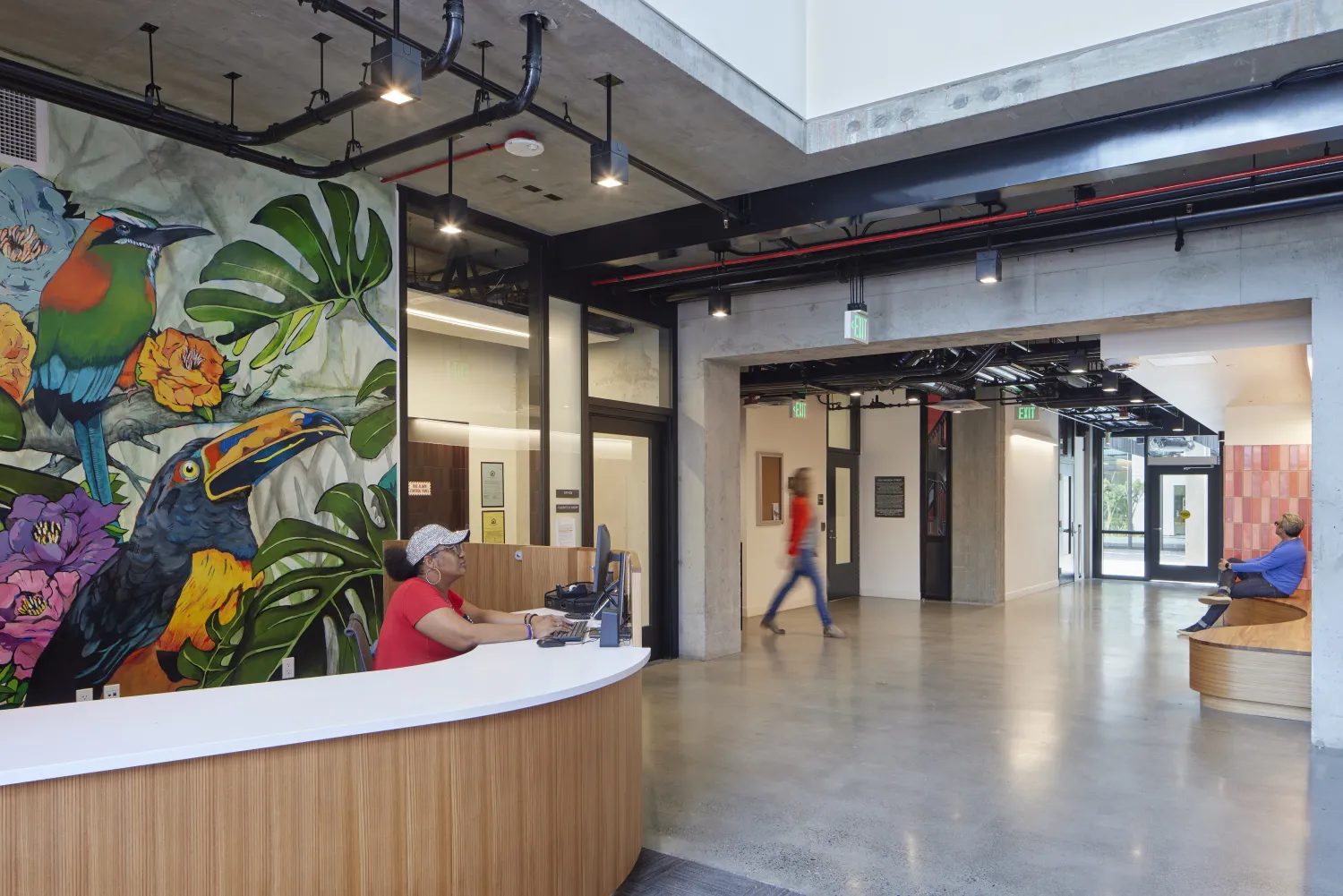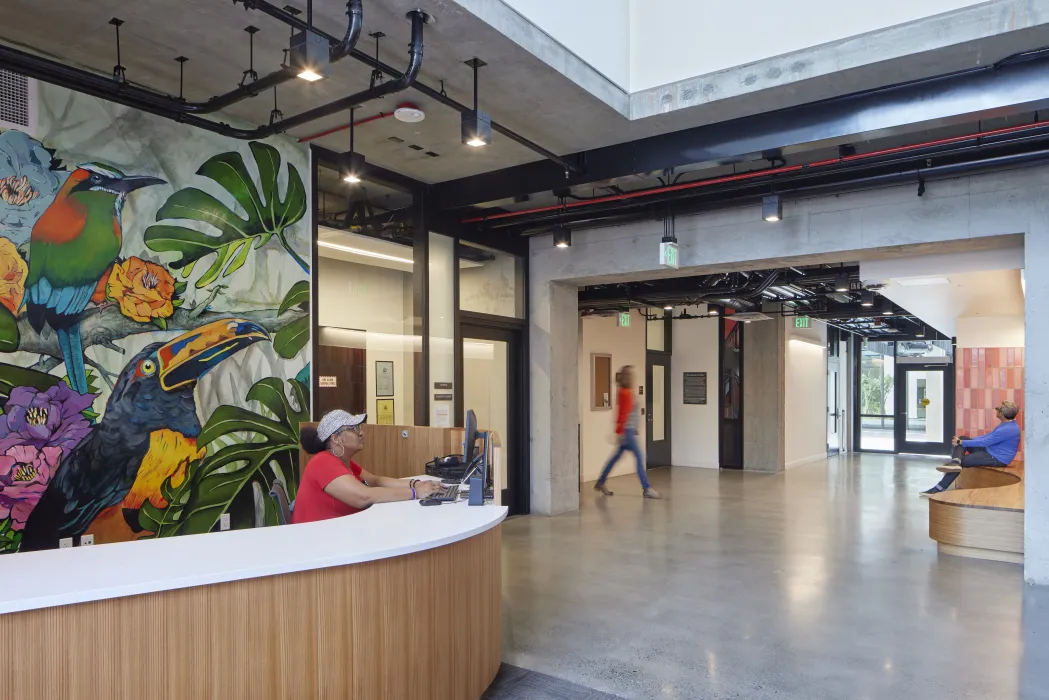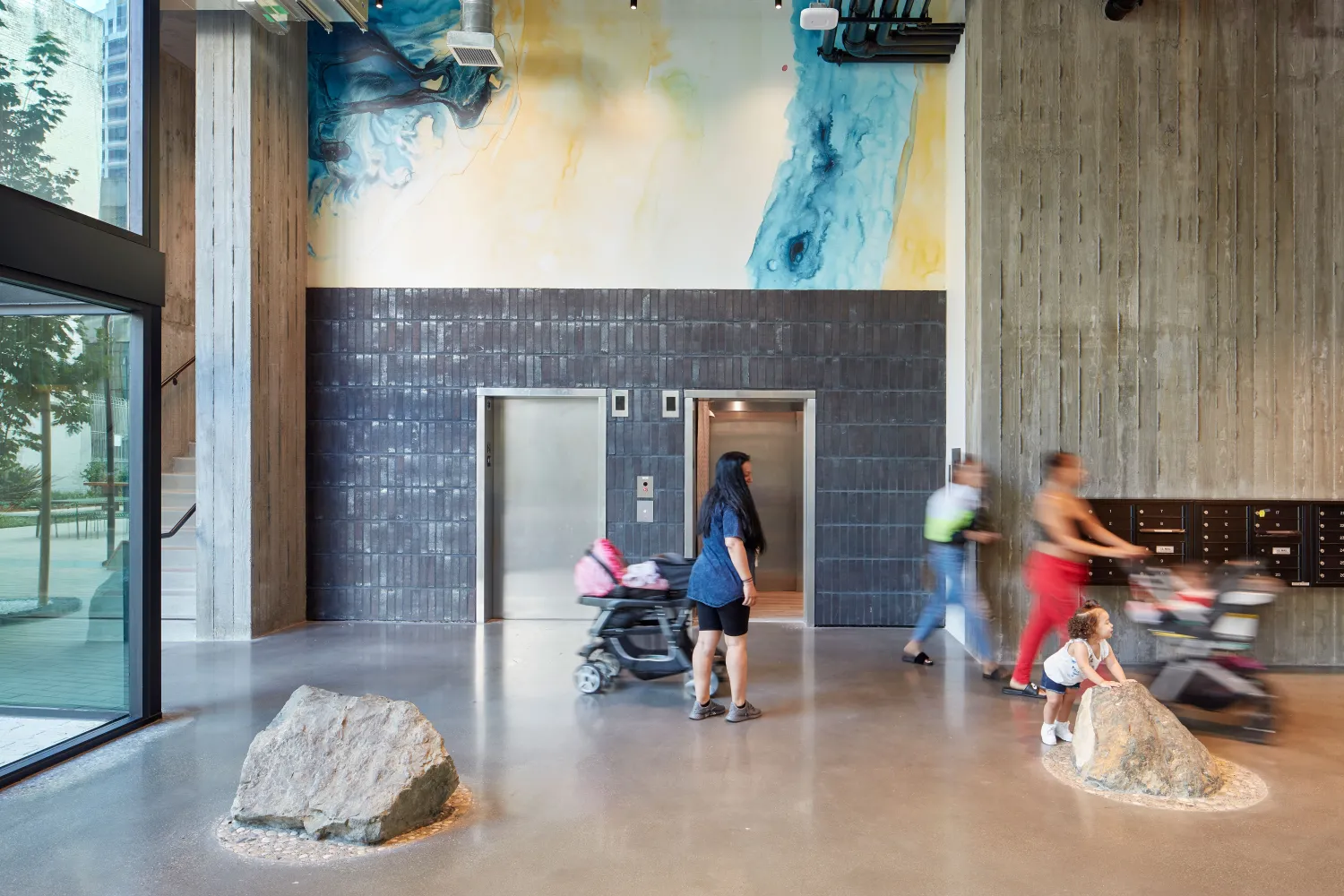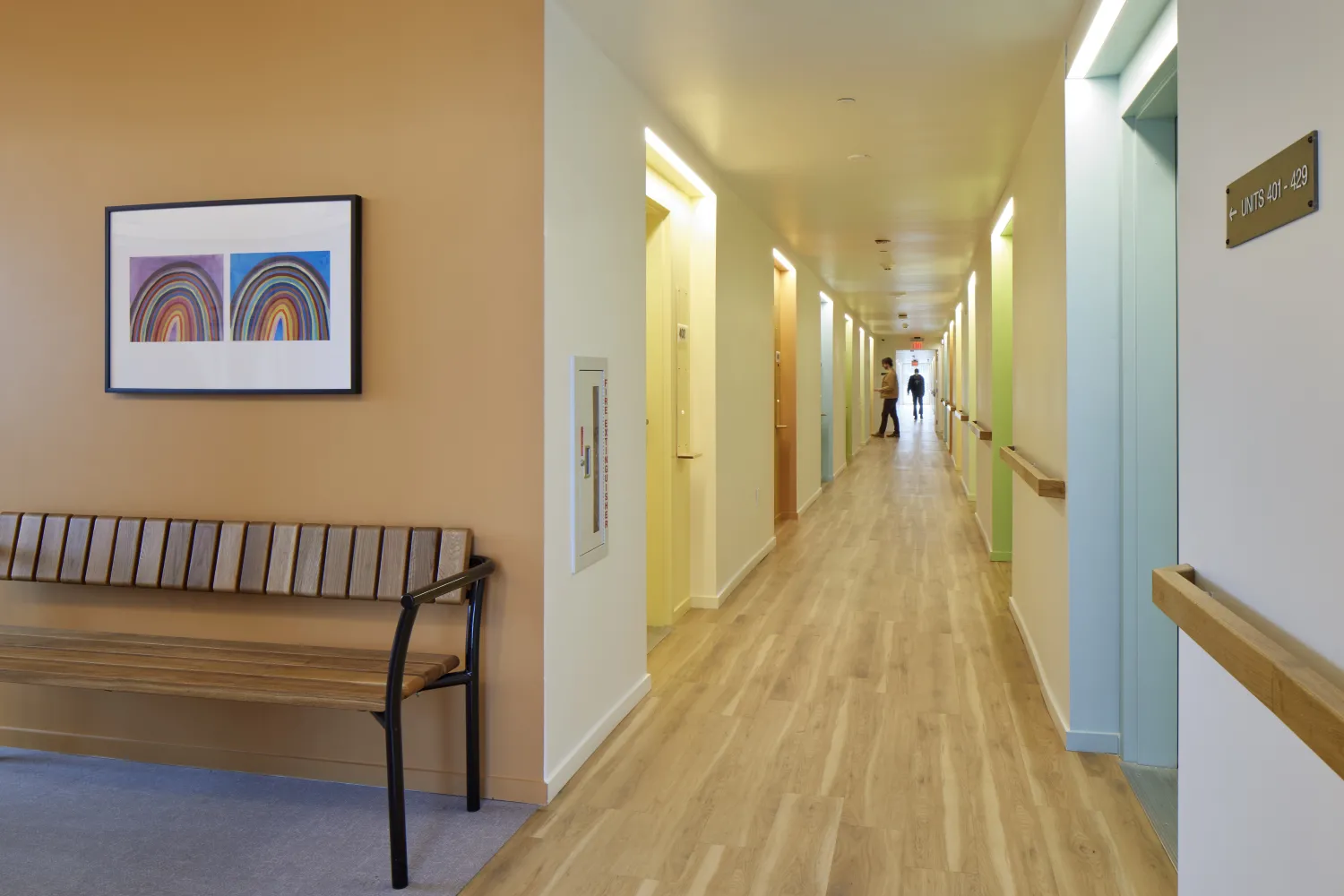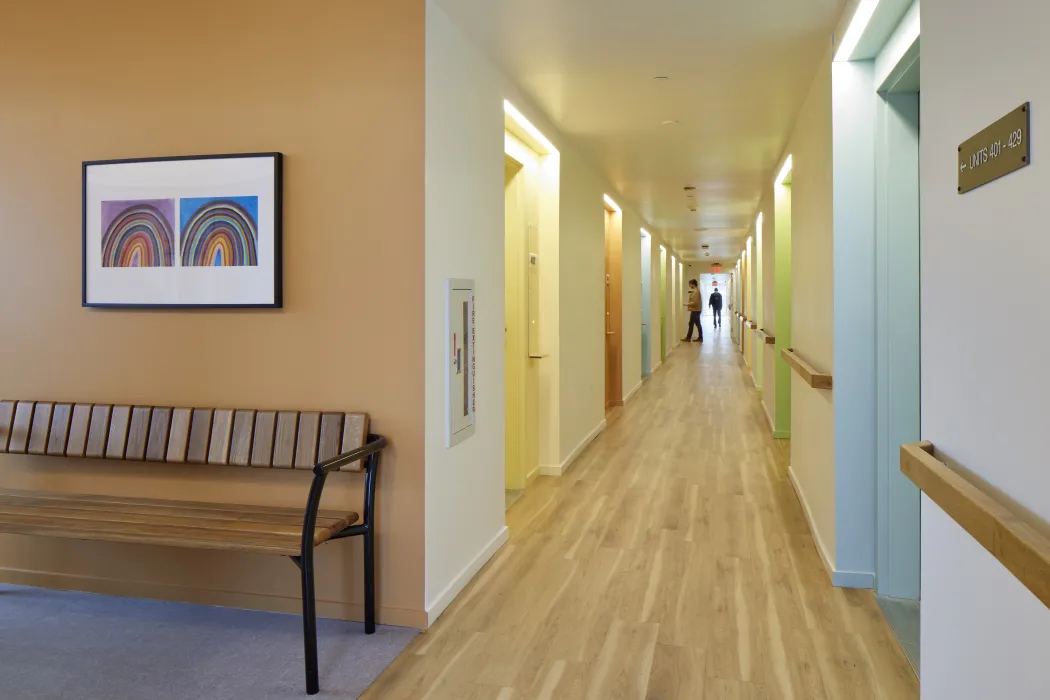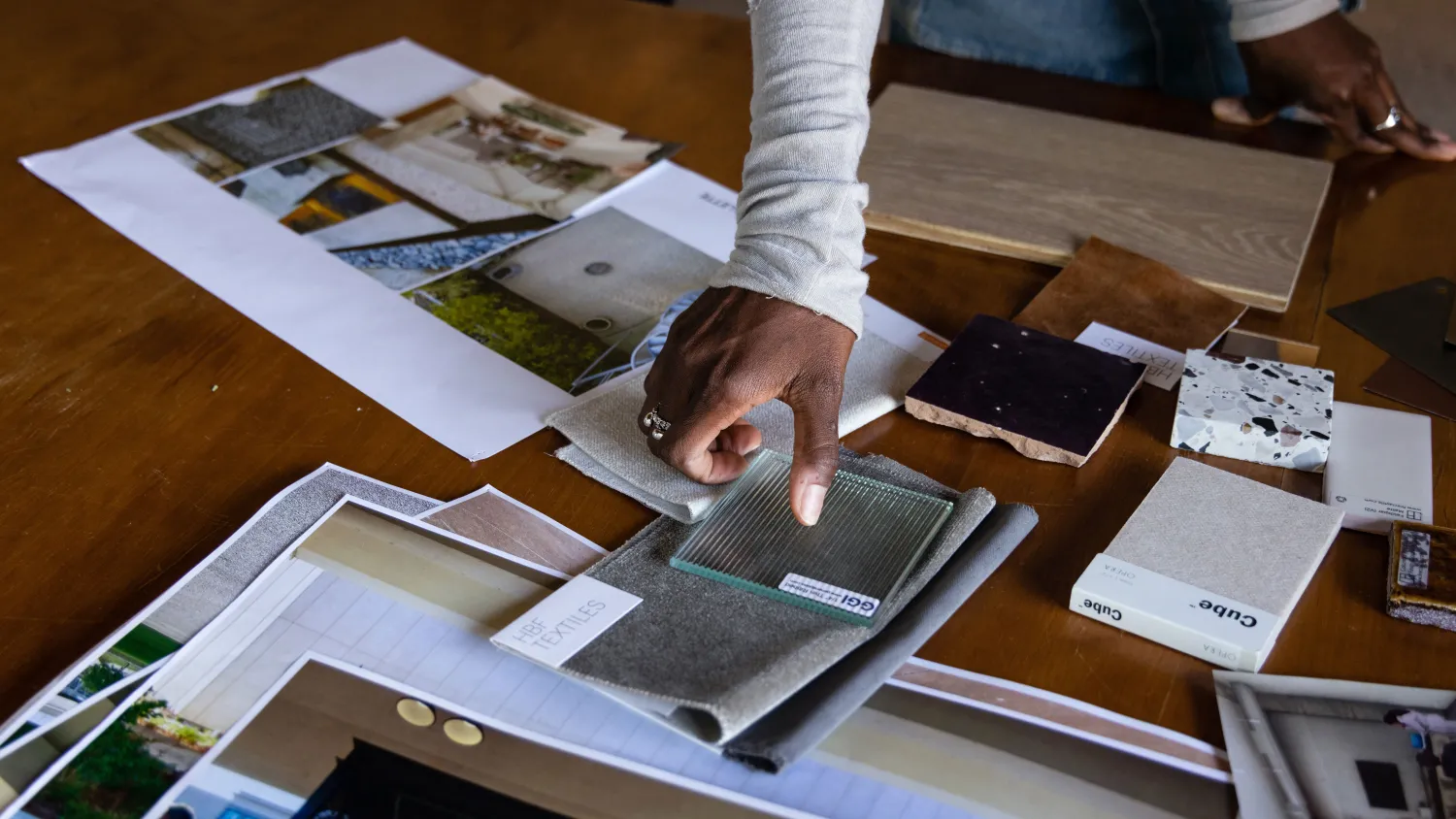
How and Why We Specify Affordable Healthy Products for Housing
According to the EPA, Americans spend 90% of their lives indoors. For architects, this means that every product or material that we select to go into any interior space directly impacts the health, well-being, and quality of life for occupants—quite a responsibility.
In affordable multifamily housing, a mainstay of our practice, we face the further challenge of specifying finishes that meet necessary criteria for durability, affordability, and resilience. For example, materials must hold up for the residents’ needs over time, weathering wheelchair wear or the potential flooding that happens periodically in permanent supportive units. Materials must be aesthetically pleasing to create beautiful, comfortable, and dignified living spaces that support communities. Materials must be both cost-effective and functional to meet budget and performance goals.
DBA’s Sustainability Action Plan includes the commitment that “our projects do not contain chemicals that cause chronic acute harm to occupants, and we continue advancing our commitment to products that support human, social, and ecosystem health.” Though all people are impacted by the production and use of toxic chemicals, residents of low-wealth communities are disproportionately exposed to chemical hazards on the job, in their neighborhoods, and within their homes. As we design buildings to support these communities, our challenge and our goal is to choose products that do not harm residents’ health, despite the need to meet an affordable housing budget.
DBA has formed a Healthy Materials Working Group to advance our Basis of Design—our decision-making framework—so that all of DBA’s architectural teams are supported with easily accessible and actionable information about the chemicals that pose the greatest challenges in our projects, starting with the most high-impact, high-touch products that have clear alternatives, and expanding into more challenging product categories. We are working towards having default specifications that are healthy and safe, and also initiating conversations with clients about the worth and value of such products.
Our Healthy Materials working group uses some key resources to vet product specifications. First, the Green Science Policy Institute’s Six Classes Approach to Reducing Chemical Harm is an extremely helpful framework to educate our design staff. One class is PFAS, highly fluorinated chemicals that have been the subject of recent controversial regulations in the EU and U.S., including a ban for use in food packaging in California, effective this year. PFAS is a big deal because this class of chemicals can be found in a vast range of consumer goods and building materials—especially sealants and coatings—and is linked to several public health issues including certain cancers and decreased immune response. Another category is flame retardants—present in almost all window-covering fabrics—which can cause hormone disruption. The Six Classes website has four-minute videos explaining each of the chemical categories. As we learn about the harms posed by each category, we know to look out for those chemicals in all future product research.
The Healthy Building Network’s HomeFree website is another valuable resource. We recommend this site in particular because the interface is clearly organized by product category—such as flooring and countertops—and is very easy to use. Within each category, materials are organized on a spectrum from healthiest to least healthy products, color-coded from green (healthy) to red (hazardous) in a graphic scale that is understandable at a glance. Our firm strives to choose materials only with green and yellow status, indicating healthiest and somewhat healthy selections. Sometimes the healthiest green status product is cost prohibitive, while a yellow-ranked product is within a client budget—and is still much healthier than the orange- and red-status products. This resource helps us specify better alternative products, while also recognizing that not all clients will be able to afford the healthiest products, such as solid wood flooring. And it should be noted, as just one example of the complexity of these decisions, that while unsealed stone rates a green status, it would not be durable enough over time as a material in affordable multifamily housing. To find the balance of safety, longevity, and economy, we can recommend the healthier alternative of quartz countertops.
Our primary tool is our master outline specification, a working document listing all key products that have been used in our built projects, including notes on best practices, performance, and manufacturers. Our working group maintains and updates healthy material recommendations on specific products and provides general guidance to all project teams. This tool is consistently used by design staff as a reference. We also use it to coordinate with our specification consultants, who often write our construction specifications, which get priced by the contractors, and built into our projects.
Every month, the Healthy Materials Working Group chooses one product to vet. We prioritize high touch, high volume materials such as interior paint, flooring, and countertops used in residential units. Additionally, we look at materials and finishes frequently required in projects and spaces serving vulnerable populations, such as children and seniors, including ceiling treatments for common areas and concrete floor sealers. Ideally, we choose products with available, safer alternatives and no cost delta. While researching, we figure out the typical product usage, the potential Six Classes chemical harms, and the HomeFree recommendations. Then, referencing our outline spec, we see if our typical finish specification passes our healthy materials screening. If not, we look for alternative products using additional healthy materials resources such as Pharos, Parsons Healthy Material Lab, Declare, MINDFULMaterials, and more. After putting together this information, we present within the group and get feedback from colleagues on other considerations and questions such as cost, durability, and certain client or contractor preferences.
There is no getting around the fact that this vetting process takes time and can be fairly disheartening. Sometimes it seems that there is no good alternative. When this occurs, we contact manufacturers for transparency advocacy and reach out to our specification writers with our criteria and a request for suggestions. Also, products frequently get discontinued, and it can be challenging to get the healthier alternatives approved by contractors and owners. Lastly, materials science is complex, and it can be difficult for architects and designers to retain information about chemicals and their effects amongst myriad other design decisions. Despite these hurdles, our group finds this effort necessary and important. In order to consistently find the healthiest products for residents of our buildings, we make sure to rotate these challenging research tasks among team members to prevent burnout.
Knowledge sharing is incredibly helpful in this healthy material research process. There is a lot of work in this space, and our research wouldn’t be possible without all of these great resources. DBA also participates in outside working groups such as International Future Living Institute Affordable Housing Pilot and the Green Science Policy Institute’s PFAs in Building Materials group.
If you are interested in working toward improved indoor air quality, join us in signing onto the AIA Materials Pledge to “support human health by preferring products that support and foster life throughout their life cycles and seeks to eliminate the use of hazardous chemicals.”
Jacqueline Lin is a Designer at David Baker Architects who is focused on improving building performance and the quality of indoor environments through energy tracking, healthy materials, and post-occupancy study.




